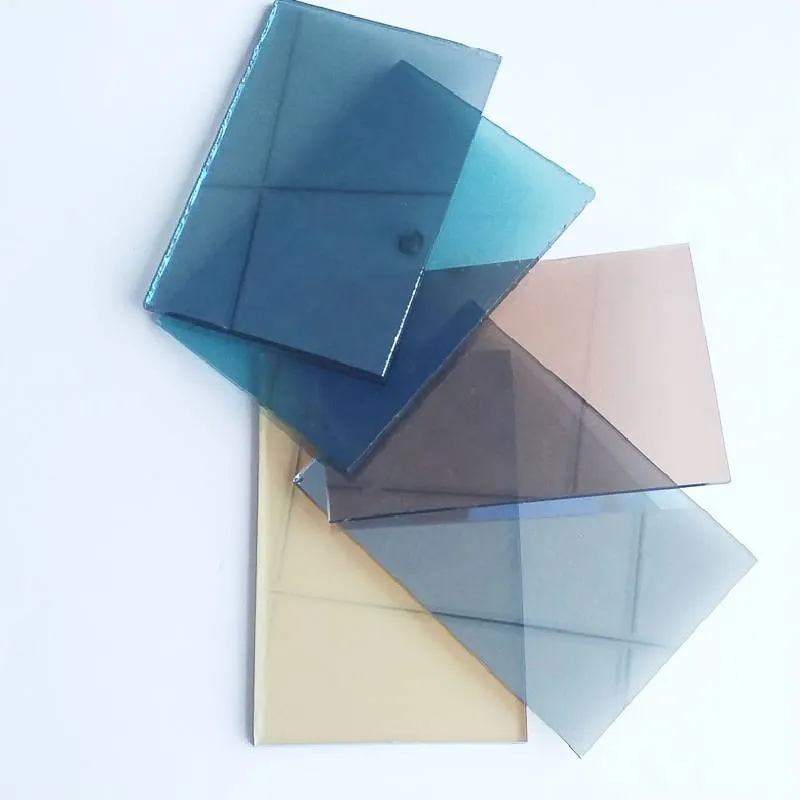Thermal Tempering of Glass Enhancing Strength and Safety
Thermal tempering of glass is a crucial process in the manufacturing of safety glass that enhances its strength and resilience. This method involves heating glass to high temperatures and then cooling it rapidly, resulting in a product that can withstand significant stress and impact. The process and its implications are vital for various applications, including automotive, architectural, and even artistic fields.
The Process of Thermal Tempering
The thermal tempering process begins with the selection of raw glass, which is then cut to the desired size and shape. The glass is placed in a furnace where it is heated to temperatures between 600°C and 620°C (about 1,112°F to 1,148°F). This heating phase is crucial because it allows the internal stresses within the glass to relax. Following this, the glass is subjected to a rapid cooling phase called quenching. Air jets are used to cool the surface of the glass quickly, while the interior remains hot for a little longer. This temperature difference creates compressive stresses on the surface of the glass and tensile stresses in the interior.
The result is a glass that is four to five times stronger than standard, untreated glass. This increased strength makes thermal tempered glass ideal for environments where safety is paramount, such as in car windows, shower doors, and facades of commercial buildings.
Advantages of Thermal Tempering
One of the primary advantages of thermal tempering is its ability to enhance the safety of glass products. In the event of breakage, tempered glass fractures into small, blunt pieces rather than sharp shards, reducing the risk of injury. This property is particularly important in high-traffic areas where glass installations are prone to accidental impact.
thermal tempering of glass
Another advantage is the thermal stability that tempered glass provides. It can withstand higher temperature fluctuations than standard glass, making it suitable for applications such as glass doors in kitchens or buildings exposed to direct sunlight. The enhanced thermal resistance not only improves durability but also ensures that the glass maintains its structural integrity under varying weather conditions.
Moreover, the aesthetic appeal of thermal tempered glass cannot be overlooked. It can be manufactured with various surface finishes, colors, and patterns, allowing architects and designers more freedom to innovate. The versatility of tempered glass opens up endless possibilities for creative and functional designs, from modern skyscrapers to elegant interior features.
Applications of Thermal Tempered Glass
The applications for thermal tempered glass are vast and varied. In the automotive industry, it is used for side windows, sunroofs, and windshields. The automotive sector demands high durability and safety, and thermal tempered glass meets these requirements effectively. In architecture, many contemporary buildings utilize tempered glass in their façades and skylights due to its strength, safety, and aesthetic versatility.
Additionally, thermal tempered glass plays a crucial role in interior design, particularly in shower enclosures and glass partitions where both safety and style are essential. In the realm of furniture design, tempered glass is frequently used for tabletops and shelving, combining functionality with elegance.
Conclusion
In conclusion, thermal tempering of glass is a transformative process that significantly enhances the strength, safety, and versatility of glass products. From improving the safety of everyday items to expanding the creative potential of architects and designers, the benefits of this technology are far-reaching. As industries continue to evolve, the demand for safe and durable glass solutions will only increase, solidifying the central role of thermal tempering in glass manufacturing. This process not only ensures the practical applications of glass but also elevates its aesthetic value, marking a significant advancement in material technology.
 Afrikaans
Afrikaans  Albanian
Albanian  Amharic
Amharic  Arabic
Arabic  Armenian
Armenian  Azerbaijani
Azerbaijani  Basque
Basque  Belarusian
Belarusian  Bengali
Bengali  Bosnian
Bosnian  Bulgarian
Bulgarian  Catalan
Catalan  Cebuano
Cebuano  Corsican
Corsican  Croatian
Croatian  Czech
Czech  Danish
Danish  Dutch
Dutch  English
English  Esperanto
Esperanto  Estonian
Estonian  Finnish
Finnish  French
French  Frisian
Frisian  Galician
Galician  Georgian
Georgian  German
German  Greek
Greek  Gujarati
Gujarati  Haitian Creole
Haitian Creole  hausa
hausa  hawaiian
hawaiian  Hebrew
Hebrew  Hindi
Hindi  Miao
Miao  Hungarian
Hungarian  Icelandic
Icelandic  igbo
igbo  Indonesian
Indonesian  irish
irish  Italian
Italian  Japanese
Japanese  Javanese
Javanese  Kannada
Kannada  kazakh
kazakh  Khmer
Khmer  Rwandese
Rwandese  Korean
Korean  Kurdish
Kurdish  Kyrgyz
Kyrgyz  Lao
Lao  Latin
Latin  Latvian
Latvian  Lithuanian
Lithuanian  Luxembourgish
Luxembourgish  Macedonian
Macedonian  Malgashi
Malgashi  Malay
Malay  Malayalam
Malayalam  Maltese
Maltese  Maori
Maori  Marathi
Marathi  Mongolian
Mongolian  Myanmar
Myanmar  Nepali
Nepali  Norwegian
Norwegian  Norwegian
Norwegian  Occitan
Occitan  Pashto
Pashto  Persian
Persian  Polish
Polish  Portuguese
Portuguese  Punjabi
Punjabi  Romanian
Romanian  Russian
Russian  Samoan
Samoan  Scottish Gaelic
Scottish Gaelic  Serbian
Serbian  Sesotho
Sesotho  Shona
Shona  Sindhi
Sindhi  Sinhala
Sinhala  Slovak
Slovak  Slovenian
Slovenian  Somali
Somali  Spanish
Spanish  Sundanese
Sundanese  Swahili
Swahili  Swedish
Swedish  Tagalog
Tagalog  Tajik
Tajik  Tamil
Tamil  Tatar
Tatar  Telugu
Telugu  Thai
Thai  Turkish
Turkish  Turkmen
Turkmen  Ukrainian
Ukrainian  Urdu
Urdu  Uighur
Uighur  Uzbek
Uzbek  Vietnamese
Vietnamese  Welsh
Welsh  Bantu
Bantu  Yiddish
Yiddish  Yoruba
Yoruba  Zulu
Zulu 

